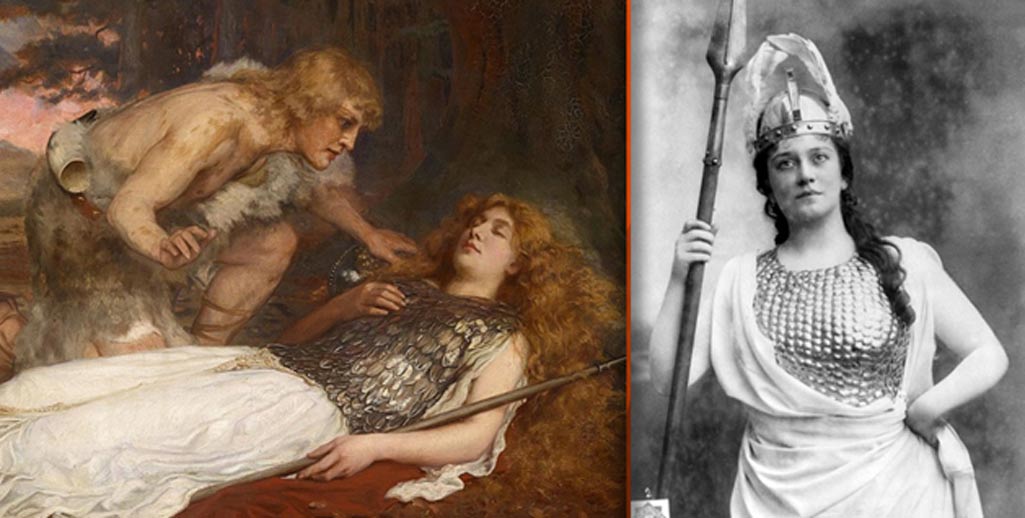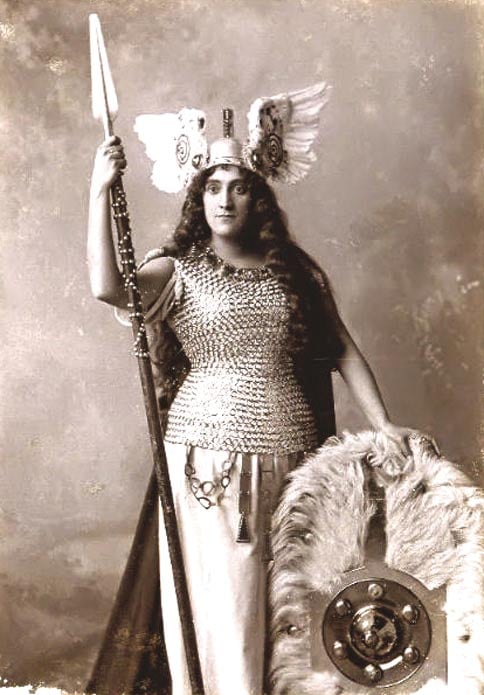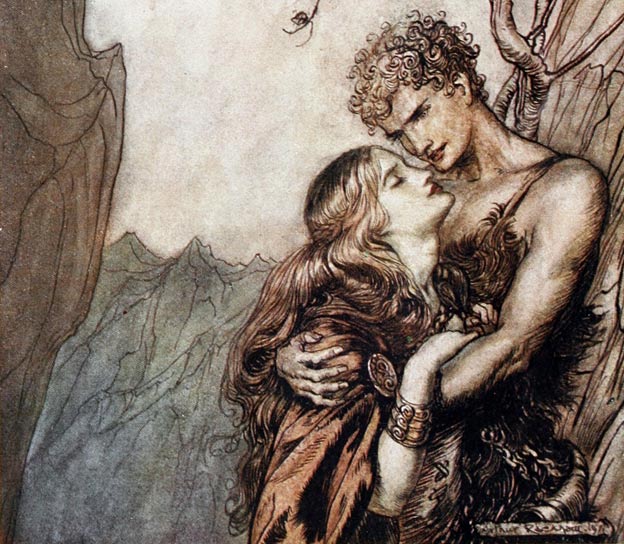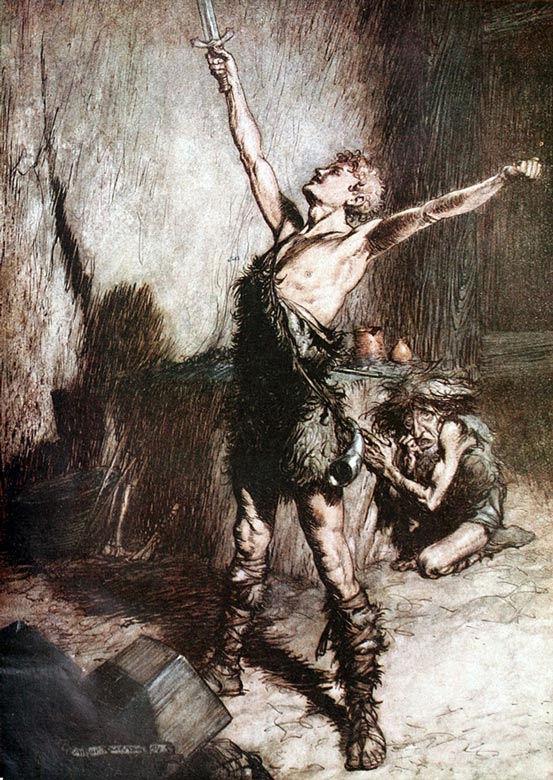
The Many Legacies of Brunhilde: Ancient Shield Maiden, National Symbol, and ‘Fat Lady’ of the Opera
Richard Wagner’s 19th century opera, Der Ring des Nibelungen (The Ring of Nibelungen), affectionately known as The “Ring” Cycle, may be considered by many as the height of operatic absurdity, with larger than life staging, costumes and voices. The image is so ingrained in the modern consciousness that opera lovers and non-lovers alike associate the opera, specifically the character of Brunhilde, with a heavy-set female opera singer wearing her hair in pig-tails, costumed with horned helmet and armor. As the opera went on to make its mark on popular culture, from featuring in an episode of Bugs Bunny to inspiring a Quentin Tarantino film, Brunhilde became a more visually recognizable figure, which is not always followed by immediate association to her name and her story.

Austrian soprano Anna Bahr-Mildenburg as Brünnhilde (Brunhilde) in Richard Wagner's Walküre. 1898. (Public Domain)
Brunhilde is an ancient character who can be traced back to Norse mythology. She is a shield maiden and, mostly due to her presence in German literature and the modern media, arguably the most famous of the Valkyrie. Before being made famous by Wagner, she appears as a character in the Eddic poems and the Volsunga Saga, as well as in the Nibelungenlied (The Song of the Nibelungens), a German epic of the 1200s.
The Many Variations of the Story of Brunhilde and Sigurd
The story of Brunhilde and Sigurd the dragon-slayer is considered by many as one of the oldest and finest of the Norse Mythology. However, like any old and beloved story, it became the subject of a widespread oral tradition, leading to many broadly similar versions. Versions of this story differ according to the time in which they were written and the character of the listeners or readers of the myth. Local bards simply adapted the story as they saw fit, resulting in many variations.

Detail; Brunhilde and Siegfried, 1911. (Public Domain)
The first mention of Sigurd and his daring deeds is found in the song of Fafnir, in the Elder Edda, the first collection of Eddic poetry. It is repeated in the Younger Edda, in the myth of the Niflungs and the Gjukungs, before being told again in the Volsunga Saga of Iceland. It was then repeated in various forms and different languages until it finally appears in the epic German poem Nibelungenlied. An early critic labeled it a German Iliad, arguing that, like the Greek epic, it goes back to the remotest times and unites the monumental fragments of half-forgotten myths and historical personalities into a poem that is essentially national in character. In this last version, Sigurd is known as Siegfried and the story is colored and modified by the introduction of many notions peculiar to the middle ages.

Siegfried holds aloft the sword Nothung in Siegfried and the Twilight of the Gods. (Public Domain)




